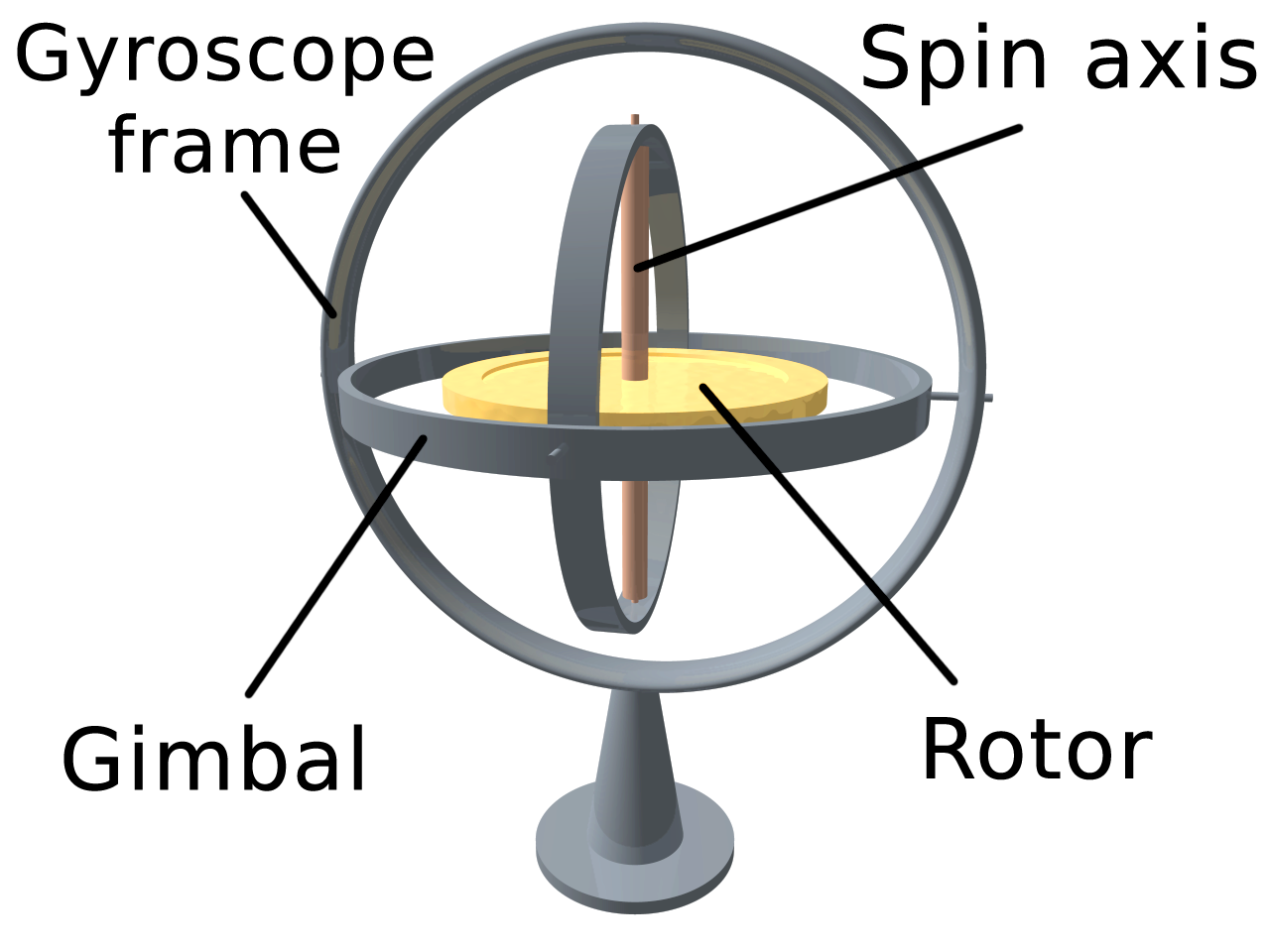|
Inertial Stellar Compass
Inertial Stellar Compass (ISC) was a proposed instrument for an advanced navigation system designed to allow spacecraft to operate more autonomously by enabling precise attitude determination with an accuracy of better than 0.1 degrees across all three axes. It also provides the capability to recover orientation after a power loss. The ISC is small in size and consumes low power to operate. The ISC was developed by NASA as part of New Millennium program's Space Technology 6 project in collaboration with Charles Stark Draper Laboratory. The instrument functions with a combination of a miniaturized star tracker and gyroscopes. It uses a wide field-of-view active pixel star camera and a micro electromechanical system to determine the real-time stellar attitude Attitude or Attitude may refer to: Philosophy and psychology * Attitude (psychology), a disposition or state of mind ** Attitude change * Propositional attitude, a mental state held towards a proposition Science and t ... [...More Info...] [...Related Items...] OR: [Wikipedia] [Google] [Baidu] |
NASA
The National Aeronautics and Space Administration (NASA ) is an independent agencies of the United States government, independent agency of the federal government of the United States, US federal government responsible for the United States's civil list of government space agencies, space program, aeronautics research and outer space, space research. National Aeronautics and Space Act, Established in 1958, it succeeded the National Advisory Committee for Aeronautics (NACA) to give the American space development effort a distinct civilian orientation, emphasizing peaceful applications in space science. It has since led most of America's space exploration programs, including Project Mercury, Project Gemini, the 1968–1972 Apollo program missions, the Skylab space station, and the Space Shuttle. Currently, NASA supports the International Space Station (ISS) along with the Commercial Crew Program and oversees the development of the Orion (spacecraft), Orion spacecraft and the Sp ... [...More Info...] [...Related Items...] OR: [Wikipedia] [Google] [Baidu] |
New Millennium Program
New Millennium Program (NMP) was a NASA project with focus on engineering validation of new technologies for space applications. Funding for the program was eliminated from the FY2009 budget by the 110th United States Congress, effectively leading to its cancellation. The spacecraft in the New Millennium Program were originally named "Deep Space" (for missions demonstrating technology for planetary missions) and "Earth Observing" (for missions demonstrating technology for Earth orbiting missions). With a refocussing of the program in 2000, the Deep Space series was renamed "Space Technology". NMP missions Missions flown *Deep Space 1 – standalone spacecraft testing solar electric propulsion, autonomous operation etc.; successful mission 1998-2001 including comet and asteroid encounters * Deep Space 2 – Mars surface penetrators flown with Mars Polar Lander in 1999; (failed) * Earth Observing 1 (EO-1) – (launched 2000) *Space Technology 5 – a cluster of three satellites ... [...More Info...] [...Related Items...] OR: [Wikipedia] [Google] [Baidu] |
Space Technology 6
Space Technology 6 (ST-6) is part of the NASA New Millennium Program. ST-6 is a subsystem technology demonstration that consisted of 2 separate projects, the Autonomous Sciencecraft Experiment on board the Earth Observing 1 satellite and the Inertial Stellar Compass (ISC) experiment aboard TacSat-2. Overview The Autonomous Sciencecraft Experiment (ASE) is a software experiment that has been operating on board the Earth Observing-1 mission since 2003. The ASE software uses onboard continuous planning, robust task and goal-based execution, and onboard machine learning and pattern recognition to radically increase science return by enabling intelligent downlink selection and autonomous retargeting. This software demonstrates the potential for space missions to use onboard decision-making to detect, analyze, and respond to science events, and to downlink only the highest value science data. The Inertial Stellar Compass Inertial Stellar Compass (ISC) was a proposed instrument for ... [...More Info...] [...Related Items...] OR: [Wikipedia] [Google] [Baidu] |
Charles Stark Draper Laboratory
Draper Laboratory is an American non-profit research and development organization, headquartered in Cambridge, Massachusetts; its official name is The Charles Stark Draper Laboratory, Inc. The laboratory specializes in the design, development, and deployment of advanced technology solutions to problems in national security, space exploration, health care and energy. The laboratory was founded in 1932 by Charles Stark Draper at the Massachusetts Institute of Technology (MIT) to develop aeronautical instrumentation, and came to be called the MIT Instrumentation Laboratory. During this period the laboratory is best known for developing the Apollo Guidance Computer, the first silicon integrated circuit-based computer. It was renamed for its founder in 1970, and separated from MIT in 1973 to become an independent, non-profit organization. The expertise of the laboratory staff includes the areas of guidance, navigation, and control technologies and systems; fault-tolerant computing; ... [...More Info...] [...Related Items...] OR: [Wikipedia] [Google] [Baidu] |
Jet Propulsion Laboratory
The Jet Propulsion Laboratory (JPL) is a Federally funded research and development centers, federally funded research and development center (FFRDC) in La Cañada Flintridge, California, Crescenta Valley, United States. Founded in 1936 by California Institute of Technology (Caltech) researchers, the laboratory is now owned and sponsored by NASA and administered and managed by Caltech. The primary function of the laboratory is the construction and operation of planetary robotic spacecraft, though it also conducts Earth-orbit and astronomy missions. It is also responsible for operating the NASA Deep Space Network (DSN). Among the major active projects at the laboratory, some are the Mars 2020 mission, which includes the ''Perseverance (rover), Perseverance'' rover; the Mars Science Laboratory mission, including the ''Curiosity (rover), Curiosity'' rover; the ''Mars Reconnaissance Orbiter''; the ''Juno (spacecraft), Juno'' spacecraft orbiting Jupiter; the ''Soil Moisture Active P ... [...More Info...] [...Related Items...] OR: [Wikipedia] [Google] [Baidu] |
Star Tracker
A star tracker is an optical device that measures the positions of stars using photocells or a camera. As the positions of many stars have been measured by astronomers to a high degree of accuracy, a star tracker on a satellite or spacecraft may be used to determine the orientation (or attitude) of the spacecraft with respect to the stars. In order to do this, the star tracker must obtain an image of the stars, measure their apparent position in the reference frame of the spacecraft, and identify the stars so their position can be compared with their known absolute position from a star catalog. A star tracker may include a processor to identify stars by comparing the pattern of observed stars with the known pattern of stars in the sky. History In the 1950s and early 1960s, star trackers were an important part of early long-range ballistic missiles and cruise missiles, in the era when inertial navigation systems (INS) were not sufficiently accurate for intercontinental ranges. ... [...More Info...] [...Related Items...] OR: [Wikipedia] [Google] [Baidu] |
Gyroscope
A gyroscope (from Ancient Greek γῦρος ''gŷros'', "round" and σκοπέω ''skopéō'', "to look") is a device used for measuring or maintaining Orientation (geometry), orientation and angular velocity. It is a spinning wheel or disc in which the axis of rotation (spin axis) is free to assume any orientation by itself. When rotating, the orientation of this axis is unaffected by tilting or rotation of the mounting, due to the angular momentum#Conservation of angular momentum, conservation of angular momentum. Gyroscopes based on other operating principles also exist, such as the microchip-packaged Vibrating structure gyroscope#MEMS gyroscopes, MEMS gyroscopes found in electronic devices (sometimes called gyrometers), solid-state ring laser gyroscope, ring lasers, fibre optic gyroscopes, and the extremely sensitive quantum gyroscope. Applications of gyroscopes include inertial navigation systems, such as in the Hubble Space Telescope, or inside the steel hull of a submer ... [...More Info...] [...Related Items...] OR: [Wikipedia] [Google] [Baidu] |
Spacecraft Attitude Control
Spacecraft attitude control is the process of controlling the orientation of a spacecraft (vehicle or satellite) with respect to an inertial frame of reference or another entity such as the celestial sphere, certain fields, and nearby objects, etc. Controlling vehicle attitude requires actuators to apply the torques needed to orient the vehicle to a desired attitude, and algorithms to command the actuators based on the current attitude and specification of a desired attitude. Before and during attitude control can be performed, spacecraft attitude determination must be performed, which requires sensors for absolute or relative measurement. The broader integrated field that studies the combination of sensors, actuators and algorithms is called ''guidance, navigation and control'', which also involves non-attitude concepts, such as position determination and navigation. Motivation A spacecraft's attitude must typically be stabilized and controlled for a variety of reasons. It ... [...More Info...] [...Related Items...] OR: [Wikipedia] [Google] [Baidu] |
TacSat-2
TacSat-2 is the first in a series of U.S. military experimental technology and communication satellites.TacSat-2 (also known as JWS-D1 ((Joint Warfighting Space-Demonstrator 1) or RoadRunner) was an experimental satellite built by the USAF's Air Force Research Laboratory with an operational life expected to be not more than one year as part of the "Advanced Concept Technology Demonstration" program. Purpose The TacSat series of experimental spacecraft are designed to allow military commanders on a battlefield to request and obtain imagery and other data from a satellite as it passes overhead. Collected data will be delivered to field commanders in minutes rather than hours or days. The sensor on TacSat-2 could collect color images sharp enough to distinguish ground objects as small as 1 meter in diameter. Systems Satellites in the TacSat series were planned to use commercial or available launchers, and largely off-the-shelf components, in order to reduce costs. Satellite ... [...More Info...] [...Related Items...] OR: [Wikipedia] [Google] [Baidu] |
New Millennium Program
New Millennium Program (NMP) was a NASA project with focus on engineering validation of new technologies for space applications. Funding for the program was eliminated from the FY2009 budget by the 110th United States Congress, effectively leading to its cancellation. The spacecraft in the New Millennium Program were originally named "Deep Space" (for missions demonstrating technology for planetary missions) and "Earth Observing" (for missions demonstrating technology for Earth orbiting missions). With a refocussing of the program in 2000, the Deep Space series was renamed "Space Technology". NMP missions Missions flown *Deep Space 1 – standalone spacecraft testing solar electric propulsion, autonomous operation etc.; successful mission 1998-2001 including comet and asteroid encounters * Deep Space 2 – Mars surface penetrators flown with Mars Polar Lander in 1999; (failed) * Earth Observing 1 (EO-1) – (launched 2000) *Space Technology 5 – a cluster of three satellites ... [...More Info...] [...Related Items...] OR: [Wikipedia] [Google] [Baidu] |




